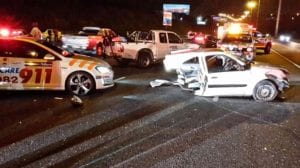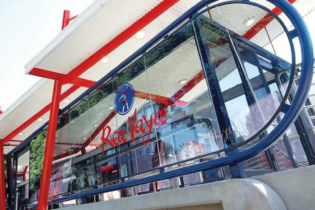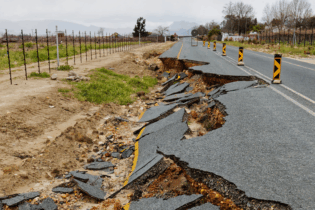By Chris Barry, MD, HCV Insurance
With vehicle insurance not being compulsory in South Africa, experts estimate that only 30% to 40% of vehicles on the road are covered, making all drivers on the road vulnerable to the costly after-effects of an accident. It’s time for the South African government to set up a state-run compulsory third-party insurance vehicle, run along the same lines as the South African Special Risk Insurance Association (SASRIA), to protect citizens from the consequences of an accident with an uninsured vehicle, in particular to cover the costly aftermath of an accident not covered by the Road Accident Fund (RAF). While injuries to your person are covered by the RAF, damage to a vehicle is not – and if an uninsured or underinsured driver has an accident with another vehicle, they would be liable for the costs incurred in that accident. How many uninsured or underinsured South Africans have the money lying around to pay for repairs to damage caused by an accident – even a bumper bashing? If we were to look for a locally relevant model on which to base this third-party insurance provider, SASRIA would be a good reference point. It is one of the state-owned enterprises (SOE) that has a good story to tell, with its results for the last year including an underwriting surplus or R468 million, a net profit before tax of R834 million, and gross written premiums of R1.5 billion. The dividend paid to the state was R206 million, an increase of nearly R100 million from the previous year. Finance Minister Nhlanhla Nene has gone so far as to praise SASRIA as one of South Africa’s top-performing SOEs. Obviously, this state-run third-party insurance would need to be funded from somewhere, and there would always be the argument that South Africa’s drivers cannot afford even more costs to be added to their licensing fees or to the overall fuel price. I would argue that South Africans simply cannot afford to NOT be covered by third-party insurance.Neighbouring countries such as Zimbabwe have seen the wisdom of instituting compulsory third party insurance, with Zimbabwe charging road users the equivalent of R550 per annum per car, R990 per annum per truck, and R330 per annum per trailer. With around 9.2 million cars and light delivery vehicles, 365,000 trucks and 183,000 trailers on South African roads, that amounts to a minimum annual income of nearly R5.4 billion.
If government were to set up a third-party insurance SOE run on the same lines as SASRIA, the organisation could turn to short-term insurance companies to collect annual fees, in return for a small commission for the administration and collection of premiums. The insurer would be self-managed, and would settle claims directly with claimants, keeping operating expenses to a minimum. If the state was either a licence carrier or a shareholder, we could assume an underwriting margin of 10%, yielding a R540 million margin, and if we were to assume a 20% underwriting surplus, that would result in more than R1 billion surplus … if the third-party insurance SOE was run on the same principles as SASRIA. Introducing this insurance would also be an opportunity to reduce the number of uninsured vehicles on South African roads. Furthermore, if third party cover was in the region of about 10%, it would make a significant dent in the more than R350 billion that accidents cost the country each year. The ‘template’ is there, so to speak. Now all that we need is political will and legislative action to create a body that will truly make a difference in the lives of the many South Africans affected by our country’s appalling road accident statistics.







